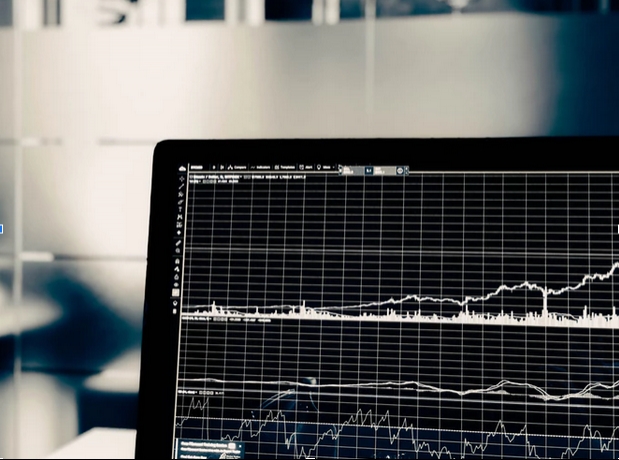S&P 500 at 8,000, gold at $5,400, Tesla to double: Here are top trades for 2026

Securities laws and regulations are in place for a reason. In most jurisdictions, these are meant to promote the flow of investments through better trust and transparency across key players. Regulations protect both investors and businesses by preventing fraudulent activity.
In the United States, the Securities and Exchange Commission was established in the wake of the Wall Street crash of 1929, before which there was little regulation of securities and thus little protection for investors and the general public. The centralized regulations instituted safeguards against fraud, as well as systematic reporting mechanisms for transparency, especially for publicly-traded companies.
With the rise in popularity of cryptocurrency and blockchain-related assets as investment instruments, it seems we are again at the cusp of a revolution in the way such instruments are managed and regulated. To date, financial regulators have viewed cryptocurrencies with caution, given the lack of centralized accountability and control.
There are even – mostly politically-driven – fears that the decentralized nature of cryptocurrencies will disrupt the current balance of power in the financial markets. Highlighting the political implications of cryptocurrencies, some have expressed concern that the rise of such decentralized systems would threaten the dominance of the U.S. Federal Reserve over international financial systems.
Earlier this year, U.S. Congressman Brad Sherman (D) sought to introduce legislation banning the use of Bitcoin and cryptocurrencies. “[W]hether it is to disempower our foreign policy, our tax collection enforcement or traditional law enforcement, the advantage of crypto over sovereign currency is solely to aid in the disempowerment of the United States and the rule of law,” he said during a House Financial Services Committee meeting in April 2019.
While such fears might be biased and legislation could be possible, it’s the enforcement that would not be as viable, given the decentralized nature and already-wide adoption of cryptocurrencies. In addition, what seems to be Bitcoin bashing by the U.S. actually adds legitimacy to Bitcoin’s profile as a means of exchange and investment.
A regulatory framework for crypto and exchanges
To address a potential “wild west” scenario, particularly in the exchange of cryptocurrencies, regulated exchanges have sprung up, which provide some safeguards against potential fraud, including KYC, anti-money laundering, and reporting processes. However, this mostly just incorporates traditional safeguard measures over an otherwise innovative technology. To date, only a small percentage of global cryptocurrency exchanges are confirmed to be licensed by regulators, though, which means such regulatory frameworks might not be a good fit when considering the nature of cryptocurrencies.
In other words, with the decentralized nature of blockchain technology, there also needs to be a drastic paradigm shift in how such securities are regulated, not only in the U.S. but in other jurisdictions, as well.
“Both the spirit and letter of US securities laws are outdated,” says Aaron Tsai, founder and chief capitalist at MAS Capital Universal Exchange, Inc. (MASex). Speaking at the Security Token Summit in Los Angeles, California, in April this year, the serial entrepreneur and investor called for regulators to “rise to the occasion,” given the “seismic shift going through the financial industry.”
He stressed the importance of decentralization in the crypto exchange industry and regulatory frameworks – and this should go beyond the limitations of country and corporate jurisdictions. “Blockchain and cryptocurrencies provide companies with a better and more efficient way to raise capital. Regulations must move with the times.”
The need for a revitalized exchange ecosystem goes beyond regulatory measures, however. Even the technical nature of most exchanges that exist today is still at odds with the decentralized nature of blockchain technology.
In the 2018 Cryptocurrency Exchange Annual Report published by crypto research firm TokenInsight, it was found that only 19 percent of global exchange ecosystem accounts for decentralized exchanges. The trading volume on these exchanges amounts to less than 1 percent of volume on centralized exchanges. Such a concentration of transactions on centralized exchanges mean there is a big security risk, particularly if a centralized exchange falls victim to hack attacks.
In line with this, MASex’ Tsai has called for a renewed focus on decentralized markets intended to provide unparalleled transparency and security without the need for a centralized regulation: “The very decentralized characteristic of the blockchain is under question. Most exchanges are completely centralized. Given it is the nature of blockchain to provide security and transparency, the move to centralization is not in keeping with crypto culture.”
Futures and the future
Perhaps one sign of positive change in the regulatory framework in financial markets is the emerging trend of trading Bitcoin futures as a derivative. Such transactions are currently regulated by the U.S. Commodity Trading Futures Commission, which also oversees independent federally-regulated (or exempted) clearinghouses both within the U.S. and internationally.
Testifying on the State of the CTFC at Congress in May this year, Chairman J. Christopher Giancarlo notes that clearinghouses are “critical single points of risk in the global financial system.” The commission is therefore cognizant of the growth and complexity of such markets. What is positive at this time is that the regulator’s fintech research group, Lab CFTC, is proactive in determining the agency’s responses to the “rapidly changing markets and technological developments.”
